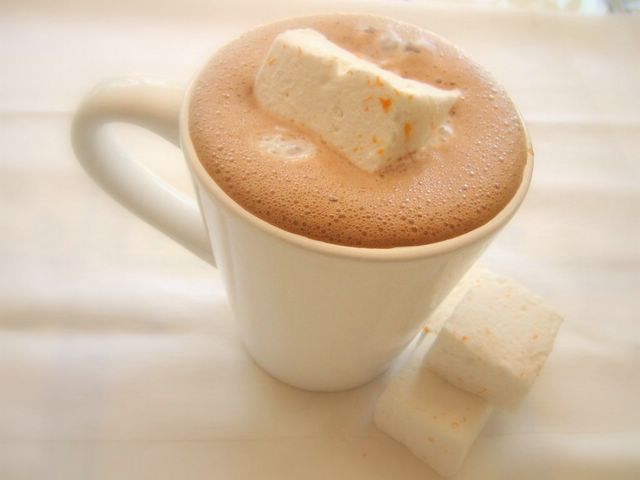Cooking School: Flatbreads and Tortillas
At first I did not believe that it is impossible to make a great pizza in a conventional oven on a baking sheet. After all, I have made pizzas this way many times. Our instructor mentioned today that if your oven is hot enough to produce an excellent crust, the toppings will be burnt long before the crust is done. Therefore, you must use a baking stone, which is itself hot since it is kept in the oven, to properly cook your pizza.
I scoffed. My pizzas were just fine, thank you very much.
Then I tasted the pizza we assembled in class.
I do not, unfortunately, own a baking stone, so it looks like I'll be holding off on pizza for a while.
Sure, it had homemade sauce and ultra-fresh mozzarella, but the crust made the pizza. Mine was very thin and wonderfully, wonderfully crisp. Of course, I was only able to eat half of mine. I left to get a second helping of the roasted asparagus and was slightly dismayed to discover that the muncher seemed to have absconded with my leftovers while her pizza was still in the oven - Her significantly less than perfect looking pizza, as she refused to wait until the ovens were free before loading her dough onto the peel. Since no one could get their pizza out of the very hot oven without the peel, her pizza (toppings and all) had to be unloaded and reloaded. Ah well. There were other things to eat.
We also made sage focaccia (mmm!) and authentic flour tortillas. I use the word authentic because we made them with lard. Before you gasp in shock and, possibly, disgust, let me say a few things about lard. First of all, it has roughly the same fat and calorie count as butter and oil - slightly less than oil, actually - and falls in between the two with the amount of saturated fat it contains. It produces flavorful baked goods due to its every so slight salty/meaty taste and contributes to a very tender product, as well. Tortillas are not exactly tender, but their fillings are well complimented by using lard. The lard is a soft solid at room temperature and makes the dough incredibly easy to work with and roll out. I didn't need to add any extra flour because the rolled dough didn't stick to my work surface at all.
Use shortening if you can't find lard.
And don't worry, I'm posting about the focaccia tomorrow.
Flour Tortillas
3 1/3 cups flour (bread flour is slightly preferable to all purpose)
1/2 cup lard
1/2 tsp salt
1 cup warm water
Dissolve salt in warm water.
Pile flour onto a flat work surface. Rub in lard with your fingers until mixture resembles coarse crumbs, like pie dough. Make a well in the flour and add 1/2 cup of the water. Knead dough together. Add remaining water 1 tablespoon at a time until dough comes together into a smooth, clay-like ball. It should not be wet.
Divide dough into 10 balls. Cover with plastic wrap or a damp towel and let rest for 20 minutes.
Roll out each ball into a circle. Get them as thin as you can - about 1mm thick.
In a nonstick frying pan over medium heat, dry fry each tortilla. It should take about 2 minutes on the first side, until the surface has many bubbles. Flip it over and cook an additional minute. Cooking may take slightly longer depending on the temperature of your stove, but do not increase the heat or you may burn the tortillas.
Tortillas can be frozen for up to 1 month, layered with sheets of wax paper.
Our instructor likes to fill the fresh tortillas with cheese and fry them in peanut oil.



<< Home